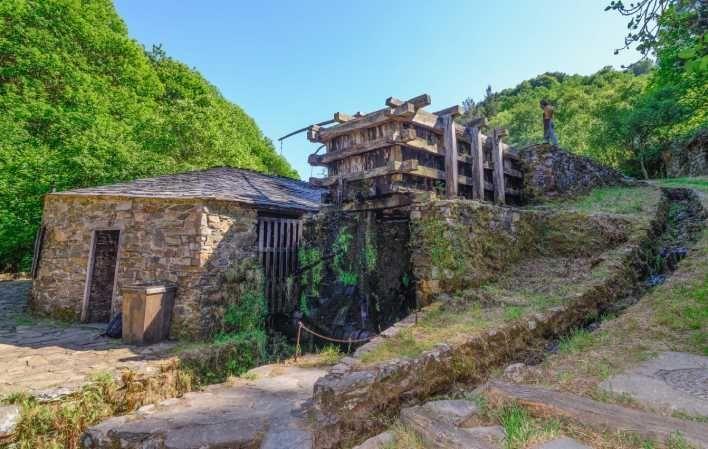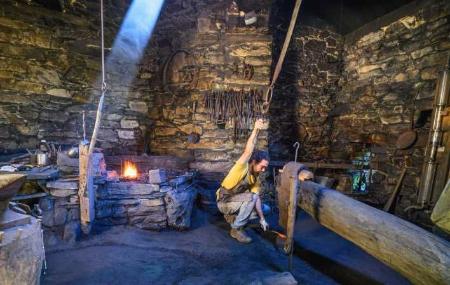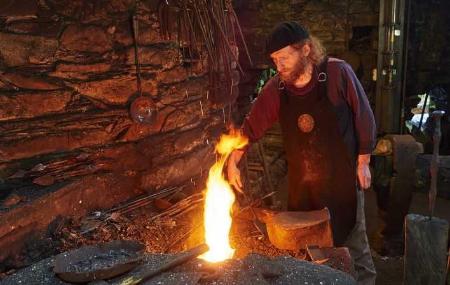
Mazonovo Ethnographic Ensemble
- Location Santa Eulalia de Oscos Western Asturias
- Address Address: El Mazonovo ■ 33776 - Santalla
- Phone Phone: 645 064 678 | 620 309 362 | 696 697 459
- Email Email: ferreirosdemazonovo@gmail.com
- Site: Visit
- Schedules and prices: View
Images
Info
The forge building was organised around two spaces that housed the hydraulic devices: the mallet and the ''barquines'', or large bellows, where, in addition, the furnace was located, which is included in the same area that houses the mallet. The complex was complemented by the hydraulic complex consisting of the dam over the river, the canal and the water storage pond or "banzao".
The most outstanding features of this forge are: the diversion of the river by means of stones, the channel dug into the ground, the banzao made of stone slabs driven vertically, except for the last section, which is made of wood, and the air "tromba", which is also made of wood.
As for the forge building itself, it is one of the most interesting as it is in a state in which it has not undergone major modifications over time. The building has irregular stone masonry masonry walls, with a slate slab roof that is nailed to slate beams supported by wooden beams and sleepers. There are three elements outside the building:
- The dam or 'tirula', built of stone slabs pierced through.
- The 350-metre-long canal, dug into the ground.
- The "banzao", made of slabs of slate, driven into the ground lengthways, the last section of which is made of wood.
As for the mallet's mechanisms, the hydraulic wheel is made of oak wood and has an outer diameter of 2.30 metres. The axle or shaft, made of oak wood, with a length of 5.13 metres, equipped with "seals" and "xemelas" made of iron, etc. The air horn is one of the most curious elements of the set, made of wood, as well as the pipes of communication with the hearth. There are two hearths: the main one, fed with air from the 'horn' and located next to the "hammer", and another secondary one fed with a manual bellows and which served as a "forge".
Schedules and prices
Guided tours (not by reservation):
21/06 a 15/09:
Tuesday to Saturday: 11:00, 12:00, 13:00, 16:00, 17:00 and 18:00 h.
Sunday: 11:00, 12:00 and 13:00 h.
Please consult special opening times for public holidays and other times of the year.
Individual: 5€.
6 to 12 years old: 2,5€.
Groups (+20 pax): 3,5€.
Forge of a nail (after the visit, if anyone is up for it): 3€.
If you travel with your pet you should know that...
Company-specific rules
- Access to the terrace or the outdoor area is possible.
- On our visit we demonstrate the hydraulic sledgehammer at the end of the visit and this makes noise. We inform the people who visit us with dogs about this so that they can decide whether they want to enter or not.
How to get here
First Name: Mazonovo Ethnographic Ensemble
GPS: +43.23512,-7.013689
Address: El Mazonovo ■ 33776 - Santalla




